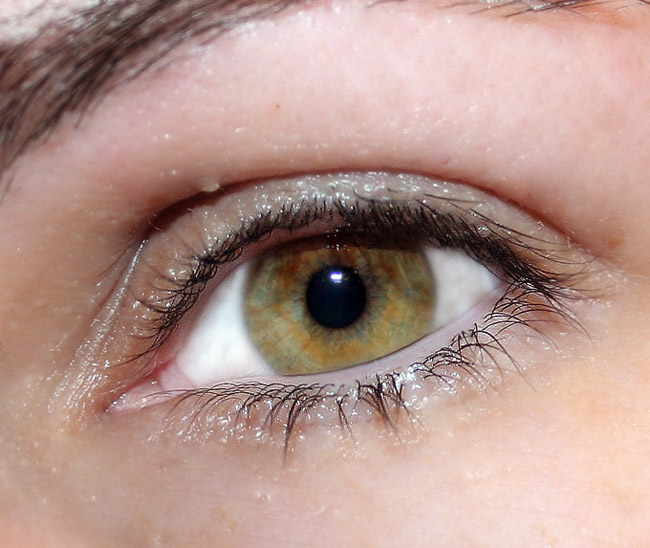The Ambiguously Colored Dress

By Annika Carter
A couple months ago, the Internet blew up over the simple image of a striped dress. The dress “broke” the Internet, sparking debates on every social media site and blog forum. I, for one, have seen it both ways. Quite annoyingly, I have had instances where I see it as blue and black one second, and as white and gold the next. Theories have been bouncing around the Internet; some viable, some not so much. But the question still remains: what actually causes this phenomenon?
 For any of you out there who have no idea what I am talking about, the infamous ambiguously-colored dress debuted on Twitter in late February. The nationwide debate really took off when Buzzfeed took it upon itself to poll its vast Internet audience: “White and gold or blue and black?” Quickly, people diverged into two camps, both stubborn and unwavering that the dress was, without a doubt, white and gold. No wait, it was blue and black. But, clearly, it was white and gold. Except that it was definitely blue and black.
For any of you out there who have no idea what I am talking about, the infamous ambiguously-colored dress debuted on Twitter in late February. The nationwide debate really took off when Buzzfeed took it upon itself to poll its vast Internet audience: “White and gold or blue and black?” Quickly, people diverged into two camps, both stubborn and unwavering that the dress was, without a doubt, white and gold. No wait, it was blue and black. But, clearly, it was white and gold. Except that it was definitely blue and black.
The morning the dress made its debut on my Facebook wall, I thought nothing of it That is, until I walked into my 9 am neurobiology class and saw none other than the dress projected onto the wall in all its ambiguous glory. After fifty long minutes of pondering the neurological processes behind the dress’ apparently color changes with no definitive explanation, my curiosity had been sparked and I was eager to learn more.
Initially, I turned to the Internet. Within days of the dress’ first appearance, numerous sources claimed to have the meaning behind the disagreement around the dress’ true colors. Some theories seemed somewhat plausible, while others made my head spin with their complexity. Still others were so far-fetched that I dismissed them without much of a second thought.
Rather than waste more time attempting to navigate the Internet’s endless claims of expert theories, I decided to turn to a real life expert: Dr. Lauderdale, my neurobiology professor. I brought with me a list of the most popular Internet explanations I had found. One by one, I presented these theories to Dr. Lauderdale.
Popular Internet Theory #1: If someone is feeling depressed or sad, or has suppressed negative emotions, they will perceive blue and black, while if they are happy, they will see white and gold.
The expert opinion? Dr. Lauderdale laughs and says “No,” it would be hard, no, impossible to explain.
Popular Internet Theory #2: As people age, the eye’s lens changes shape, distorting the colors we see and causing adults to see gold and white more often than teenagers and children, or causing people with different lens shapes to see different colors.
The expert opinion? Dr. Lauderdale says, “This simply is not true.”
So what is the most plausible explanation? Dr. Lauderdale began with a disclaimer, stating that his guess was just as good as mine (although I doubt this slightly, given his doctorate and my lack-of-a-doctorate). He continued to explain the center-surround organization of the eye. The retinal surface is composed of photoreceptors, or light-sensitive cells, known as rods and cones. We can think of these photoreceptors as organized in circular patterns, with an “on” center and an “off” surround. This means that the center of the circle prefers to be in the presence of light, while the surround of the circle prefers to be in the absence of light. The opposite can also be true, with the center preferring the absence of light and the surround preferring the presence of light. To translate this technical jargon to plain English: If one part of the retina wants to be in light, the surrounding areas like the dark, and vice-versa.
We can think of this as similar to the classic face-vase optical illusion.
When someone first glances at the dress, their eyes and visual cortex are trying to distinguish the highlights of the dress from the background. We can think of this as similar to the classic face-vase optical illusion. One second we see a vase, another second we see two human profiles looking at each other. In the case of the dress, some people see the background as the source of light upon first glancing at the image, thus seeing the dress as a darker blue and black. Others see the dress as having light shining upon it and thus see white and gold. What we see is simply a matter of what information our eyes, and brains, are keying into at a given time.
Much of how the human brain functions in still unknown, so what truly causes such a drastic difference in perception may not be known for a fact for years to come. At least I can put my mind to rest, knowing I have an explanation that is at least slightly more credible than the multitude of Internet sources I discovered. So, the next time an Internet phenomenon threatens a divide between you and your best friend, take a deep breath. What might seem like a detrimental clash of wits might simply be a difference in light perception.

